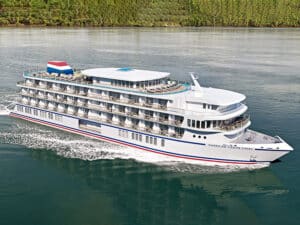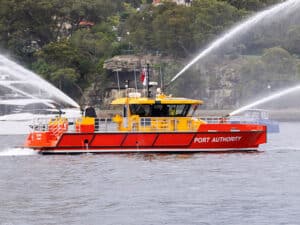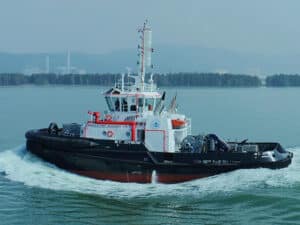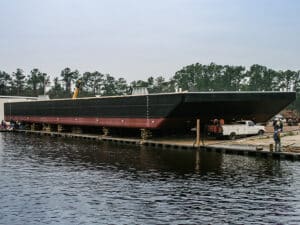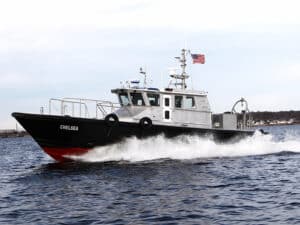
Svitzer trials remotely operated tow line catcher
Written by Nick Blenkey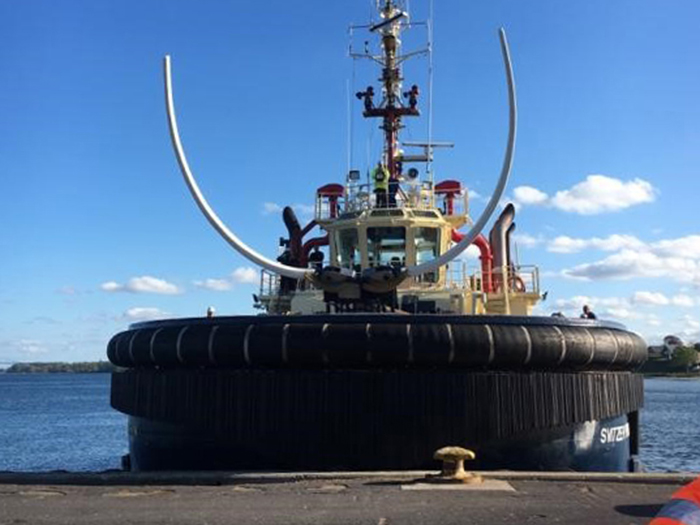
Line catcher is remotely operated from the wheelhouse
Connecting heaving lines at sea is one of the most critical parts of day-to-day towage operations, however it presents significant risk to crews, particularly from a center lead forward position where tugs must operate very close to the connecting vessel. Now Maersk group towing specialist Svitzer has started sea trials of a remotely operated line catcher that could significantly improve safety standards and reduce risks to crews.
The new system is being trialed on the vessel Svitzer Trym, in the company’s Scandinavian fleet.
- The line handler consists of a hydraulically controlled set of catching arms, fitted on the foredeck of the tug.
- It includes an automated tying mechanism that connects the heaving line with the tug’s rope line in a safe and efficient manner.
- The catching arms and the tying mechanism are remotely operated from the bridge
- It has a wingspan of 6-7 metres in the air above the foredeck of the tug when activated.
- It includes an automated tying mechanism that connects the heaving line with the tug’s rope line in a safe and efficient manner.
- With the line catcher in place, customers’ crews can use adequately weighted lines without risk to Svitzer personnel.
The new prototype line catcher is remotely operated from the wheelhouse and catches and secures the connecting vessel’s heaving line. With a wingspan of between 6 and 7 meters when activated, the crew on the connecting vessel has a larger target area to hit with the heaving line weight, and no member of the tug’s crew is exposed during the process.
As well as enhancing safety standards, the automated catching arm prototype is also designed to increase the success rate of connecting the vessel to the tug, leading to safer and more efficient operations.
Svitzer’s technical team in Copenhagen has been developing the remote line handling technology for the past year, and it will now be installed and tested over the coming months on Svitzer Trym to prove the concept.
This will include documenting and analyzing performance in a live operational environment and recording how the technology is impacted by weather and other factors so that potential improvements can be made to further enhance safety and efficiency. The testing process will also define clear requirements and standards that will need to be implemented for the training of crews in effectively and safely operating the remote line catcher.
The installation is being conducted in consultation and with final approval from classification society, Lloyd’s Register.
“At Svitzer safety comes first, and we have an obligation and duty of care to constantly look and evaluate how we can further improve safety standards for our crews, and increase efficiencies within our operations for our customers,” said Leonardo Sonzio, Chief Operating Officer, Svitzer Global. “Catching and securing a vessel’s heaving line is a key area that has always presented significant risk for towage operator crews. We have therefore spent considerable time and resource over the past year looking at how we can make a difference, and while we may be at the testing phase, we are hopeful that this new line handling technology is the step-change that is required, and will set a new benchmark for safety excellence within the market.”

